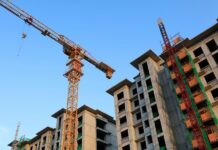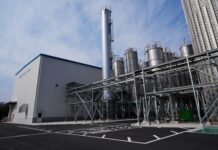ThyssenKrupp tops out 232m-tall test tower for liftsTower Bridge lift fall results in £100k billCrossrail to pioneer incline liftsGreek lift company targets UKPoor communication contributed to lift death
ThyssenKrupp has unveiled a functioning model of the world’s first rope-less elevator system.
The company had announced a year ago that it was developing the Multi system, which uses linear motors instead of ropes and has multiple cabins per shaft. Multi also enables horizontal movement and is intended to transform how people move inside buildings.
In a manner similar to a metro system, the design can incorporate various self-propelled cabins per shaft running in a loop, increasing the shaft capacity by up to 50% and making it possible to reduce the elevator footprint in buildings by half. With Multi, it will also be possible for the first time to move horizontally in a building, said ThyssenKrupp.
The 1:3 scale model has been built at the company’s Innovation Center in Gijón, Spain. It has two 10m shafts four cabins working in a loop and uses linear motor technology based on the Transrapid magnetic levitation train.
This latest ThyssenKrupp launch follows the recent introduction of the Accel system, which applies the same linear motor technology to move people short distances in cities and airports.
ThyssenKrupp Elevator CEO Andreas Schierenbeck said: “As we promised 12 months ago, we present today the first model of our ground-breaking Multi elevator system. Our research and development team is right on track to realize this cutting-edge transport technology. Multi will be our answer to tomorrow’s challenges: as the nature of building construction evolves, it is also necessary to adapt elevator systems to better suit the requirements of buildings and high volumes of passengers.”
Multi runs on a multi-level brake system and inductive power, which transfers from shaft to cabin. The system requires smaller shafts than conventional elevators and can increase a building’s usable area by up to 25%, claimed the company. It sees this as particularly important given that current elevator-escalator footprints can occupy up to 40% of a building’s floor space, depending on the building height.
The overall increase in efficiency also translates into a lower requirement for escalators and additional elevator shafts, resulting in significant construction cost savings and increased rent revenues from the greater availability of usable space, said ThyssenKrupp.
Currently, there are over 180 buildings that will rise above 250m under construction worldwide, with about 50 buildings being completed every year, the company pointed out. In the mid-rise market, there are currently about 800 buildings being built that will rise to over 150m.
































